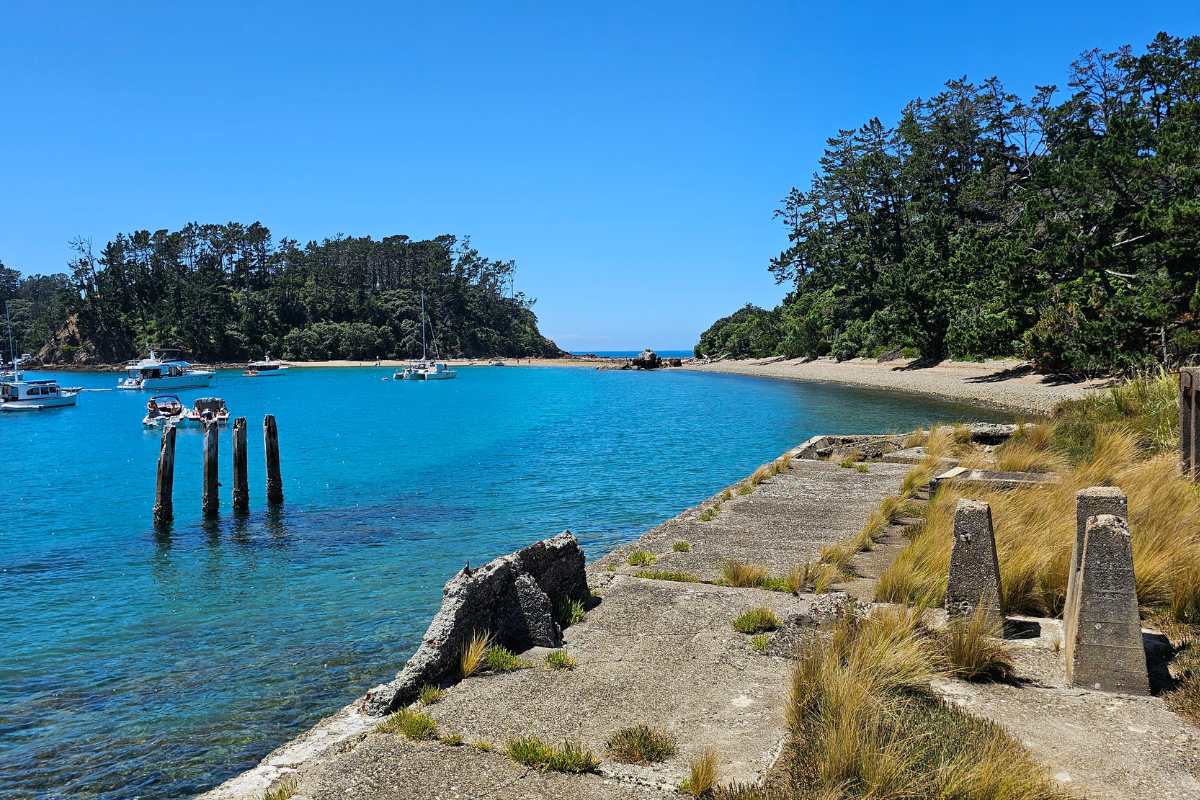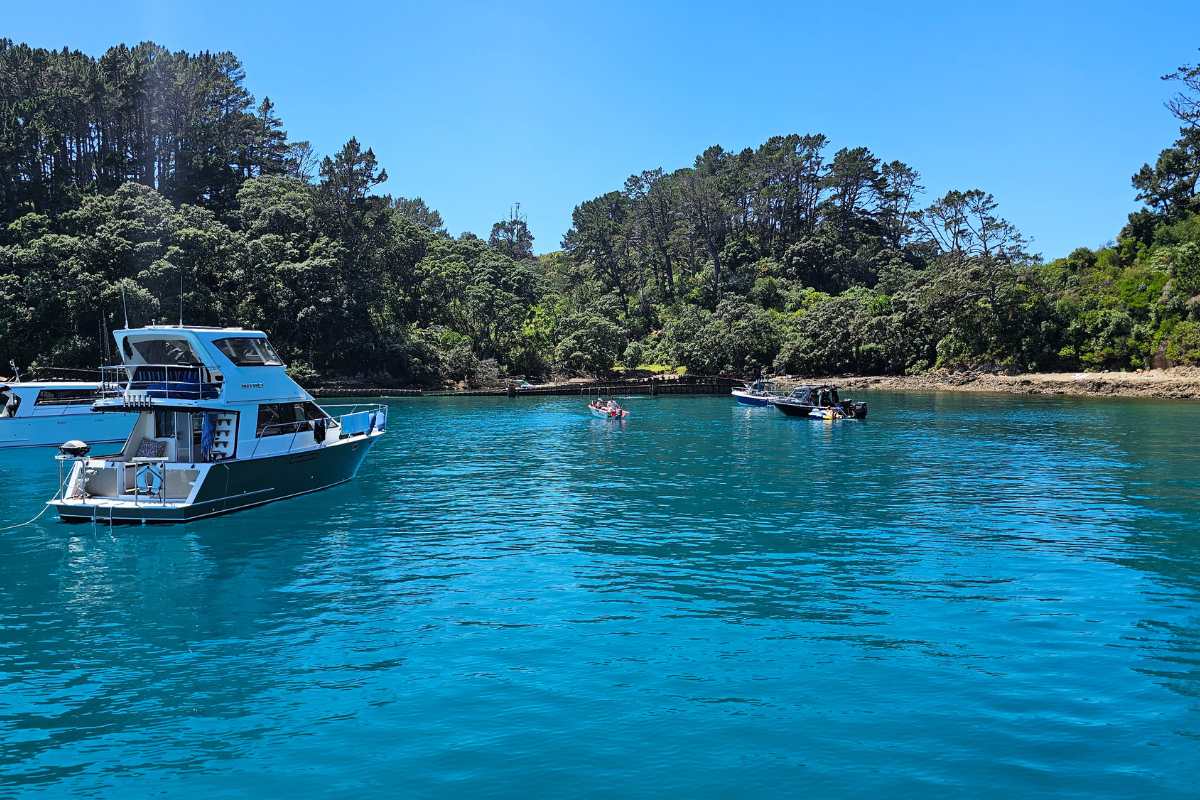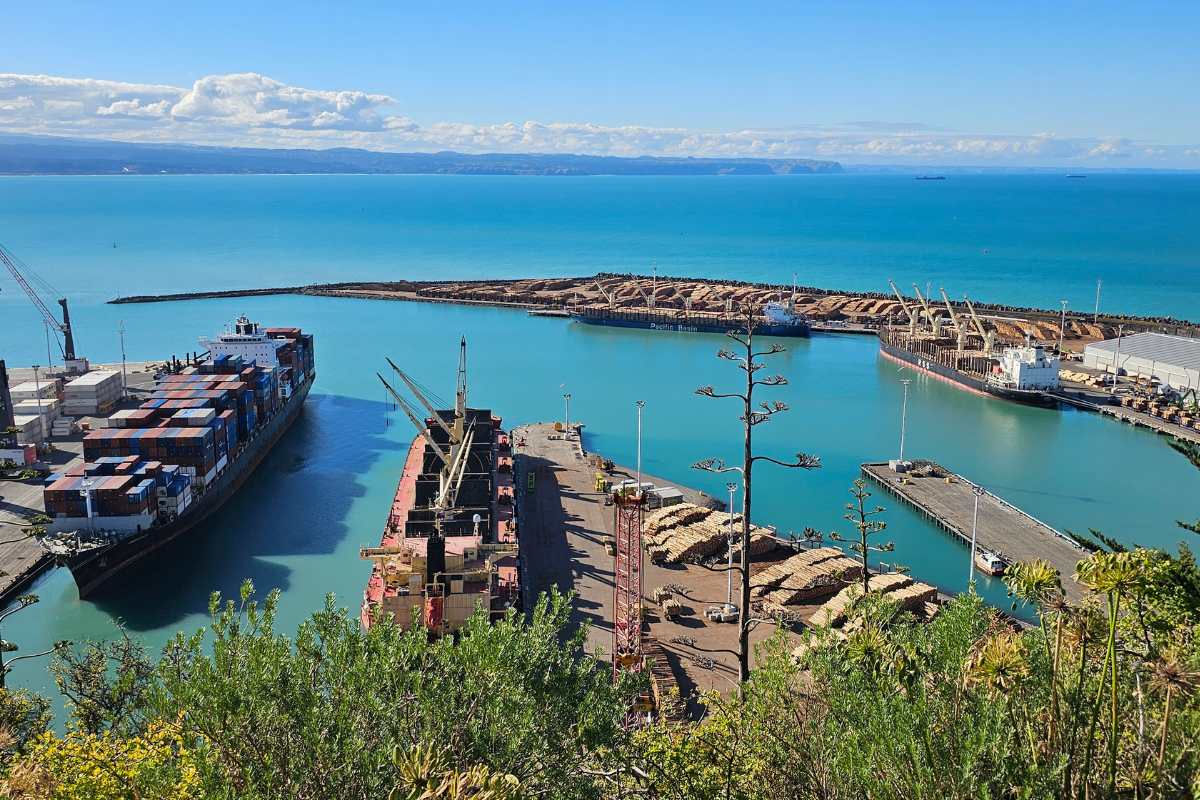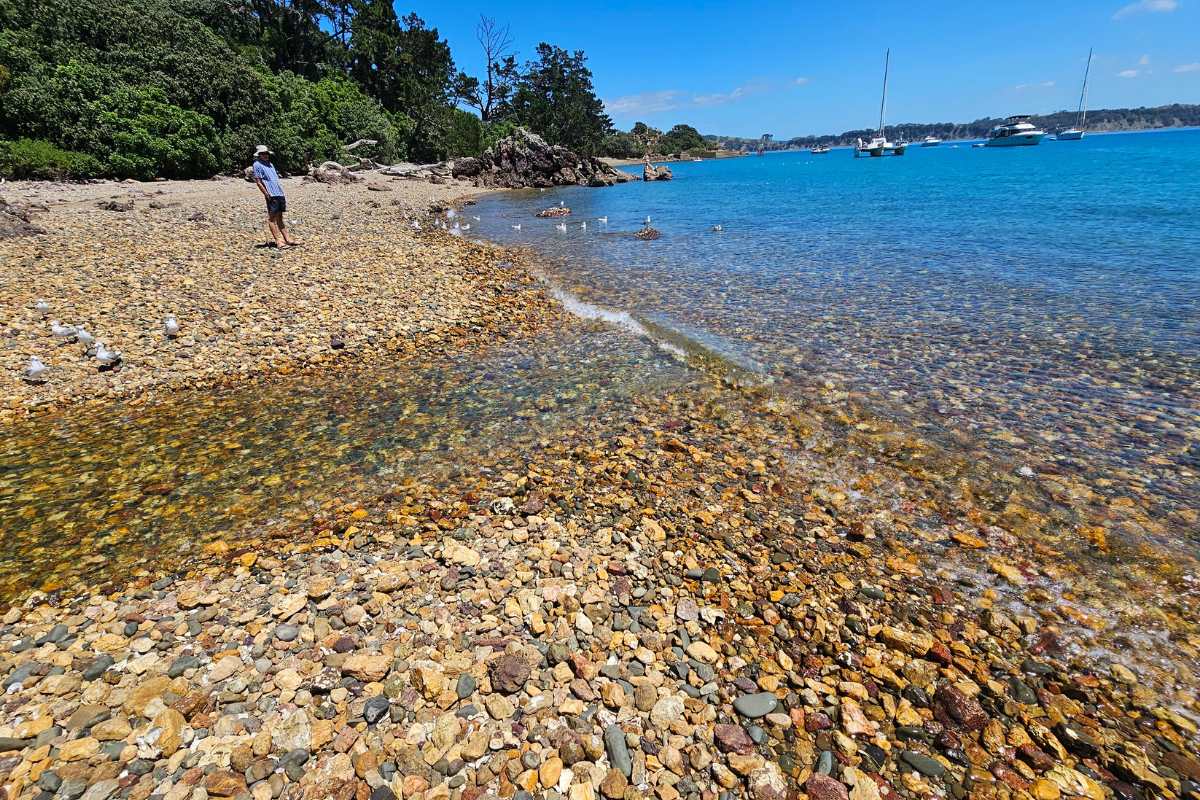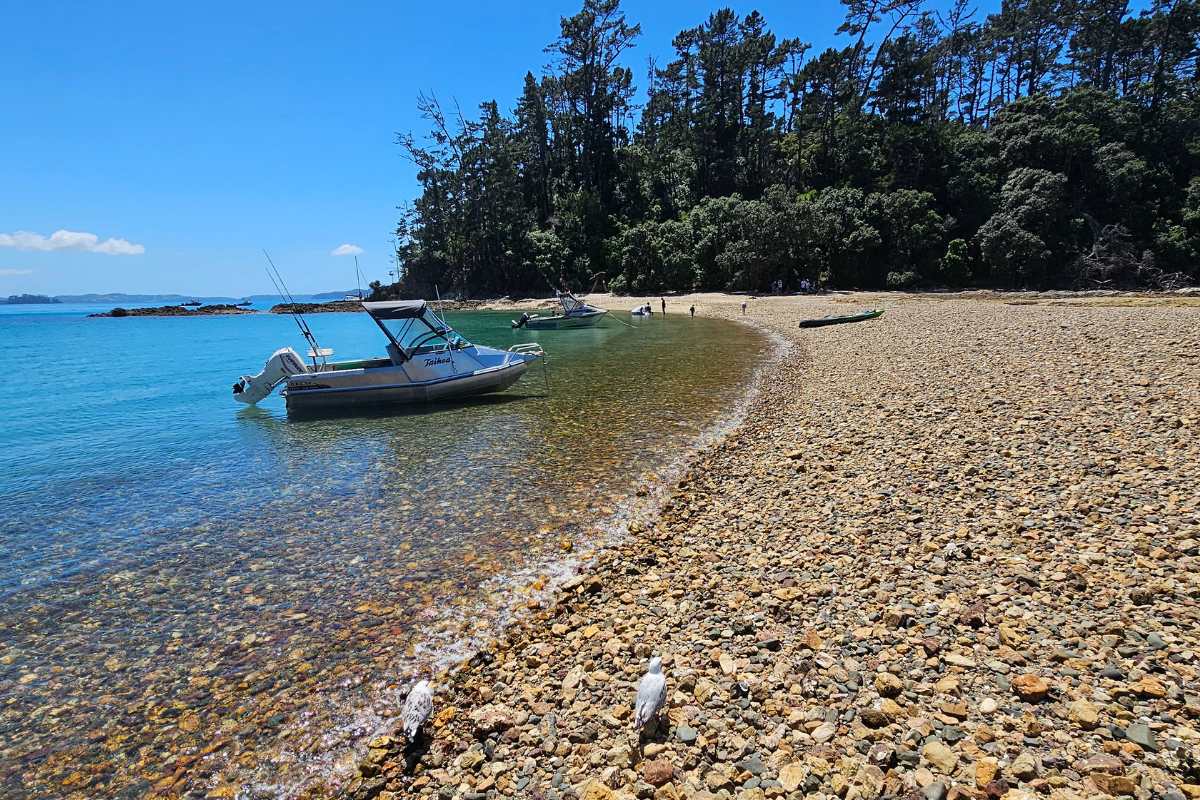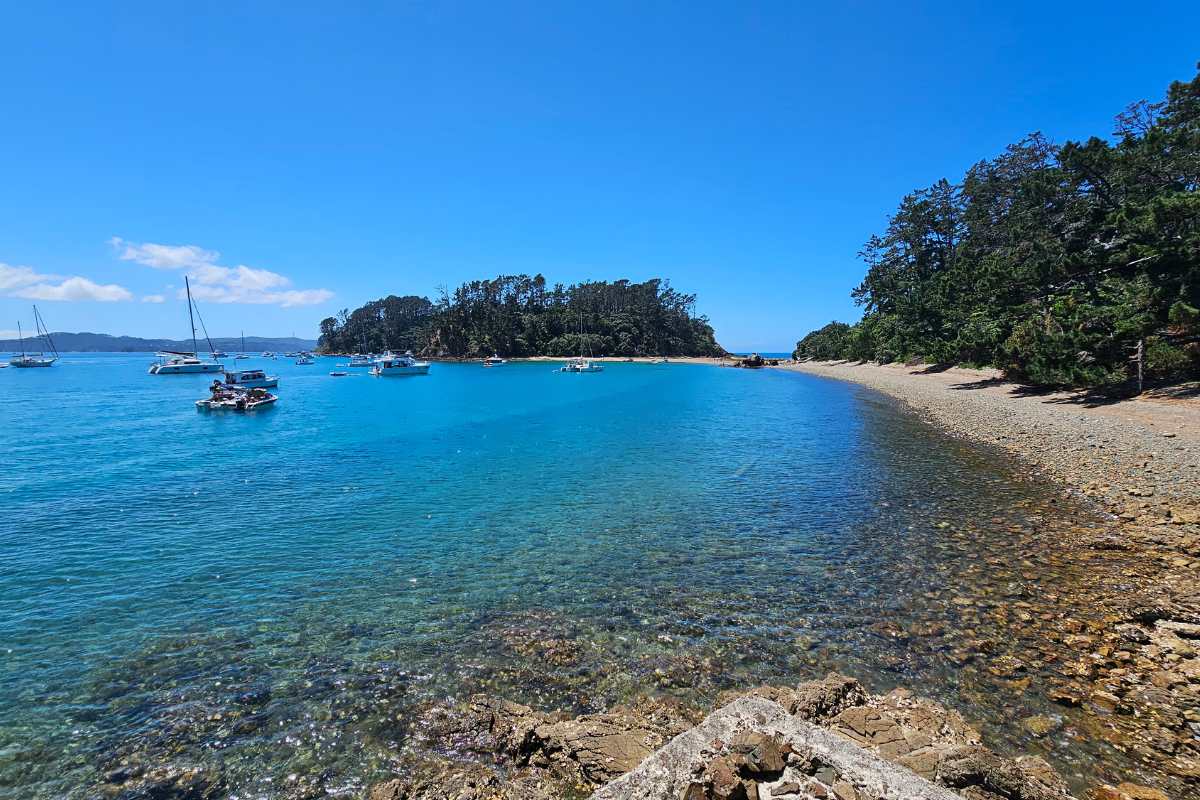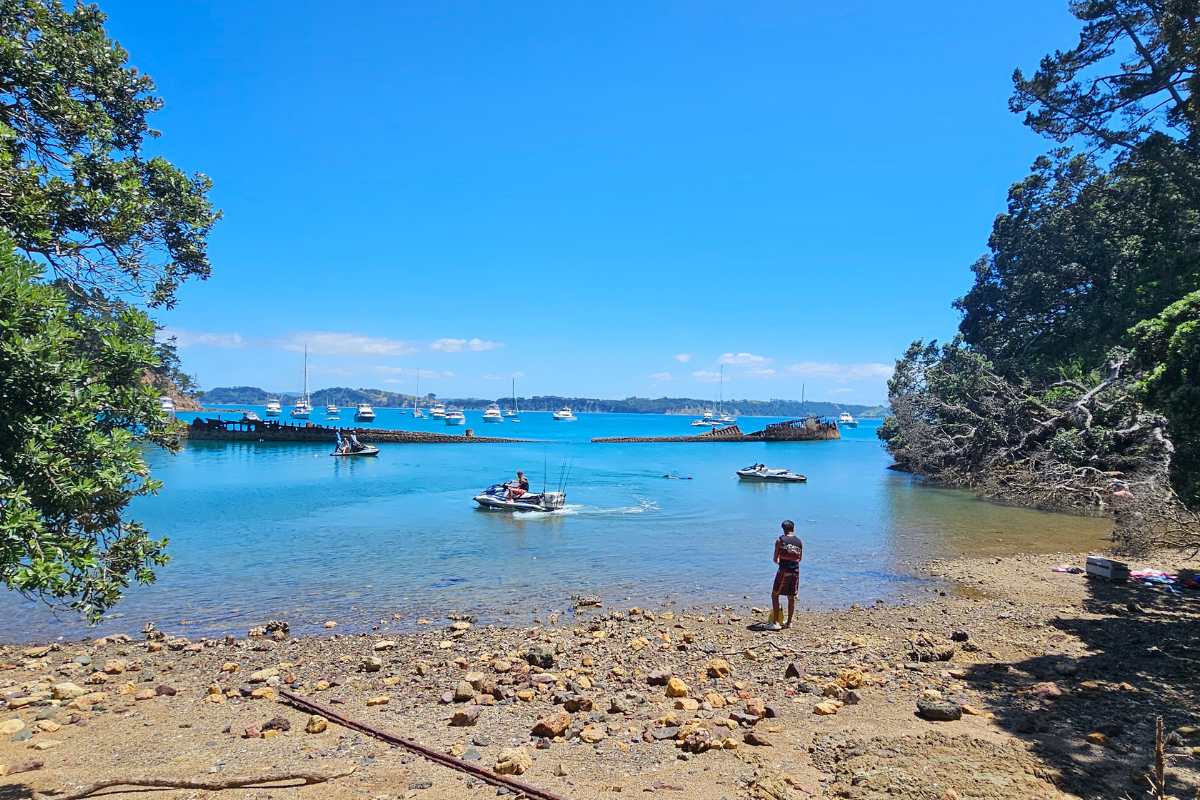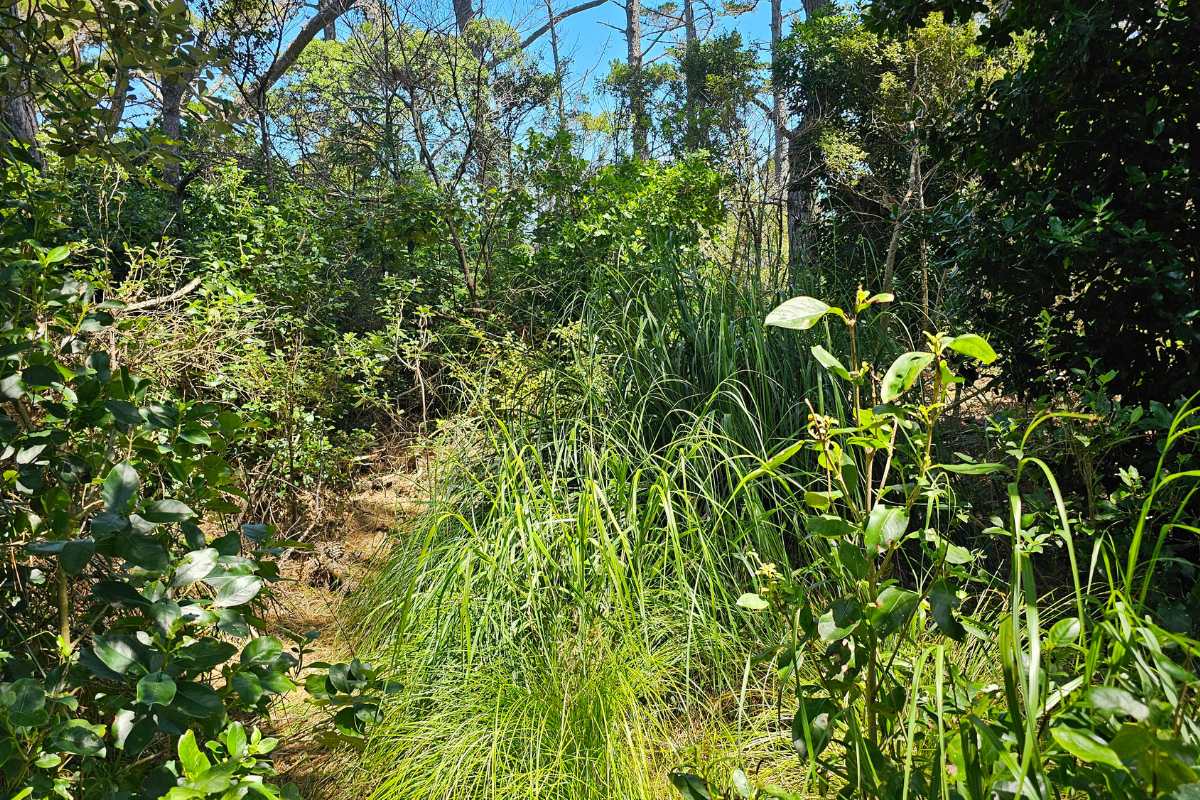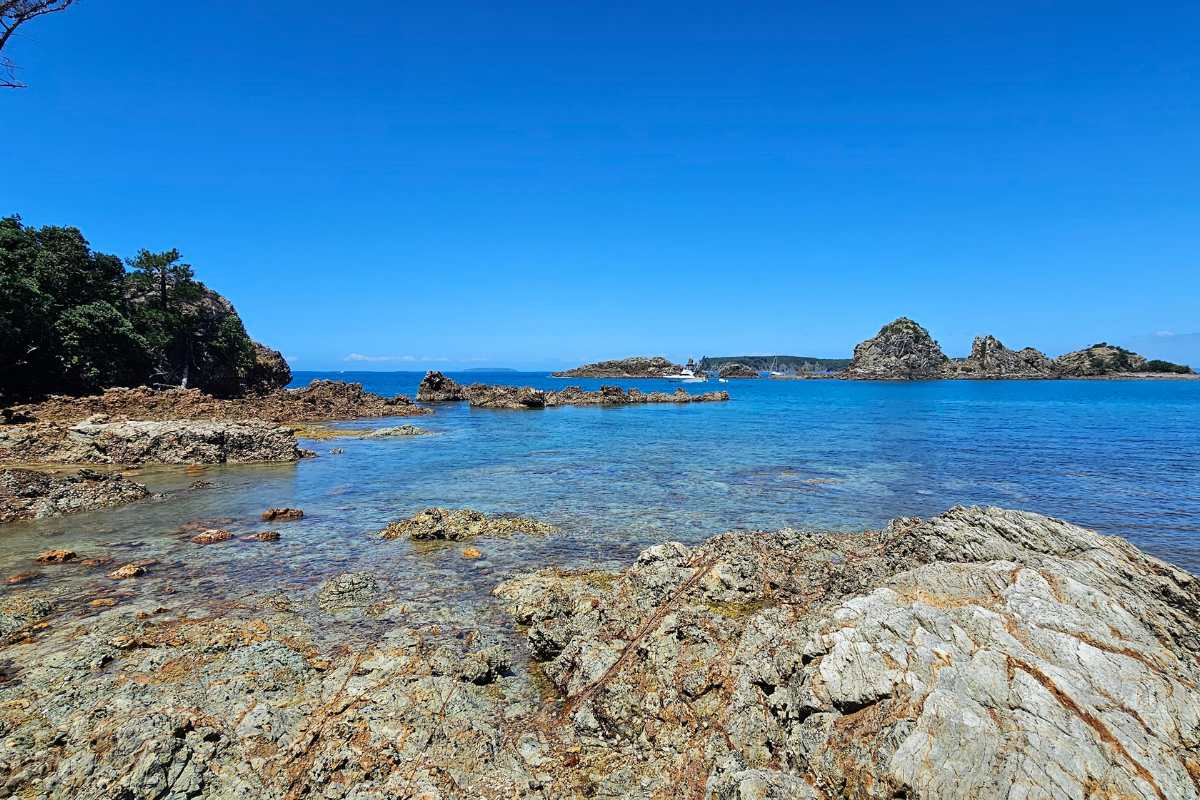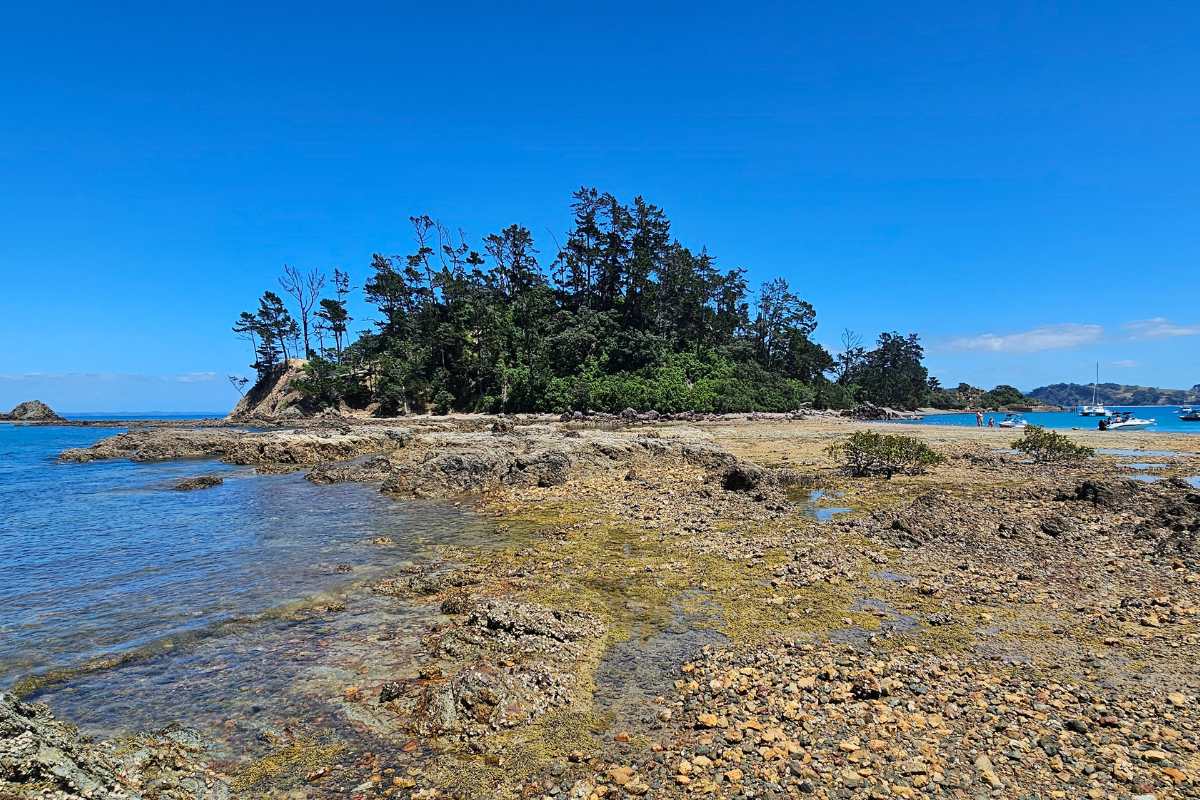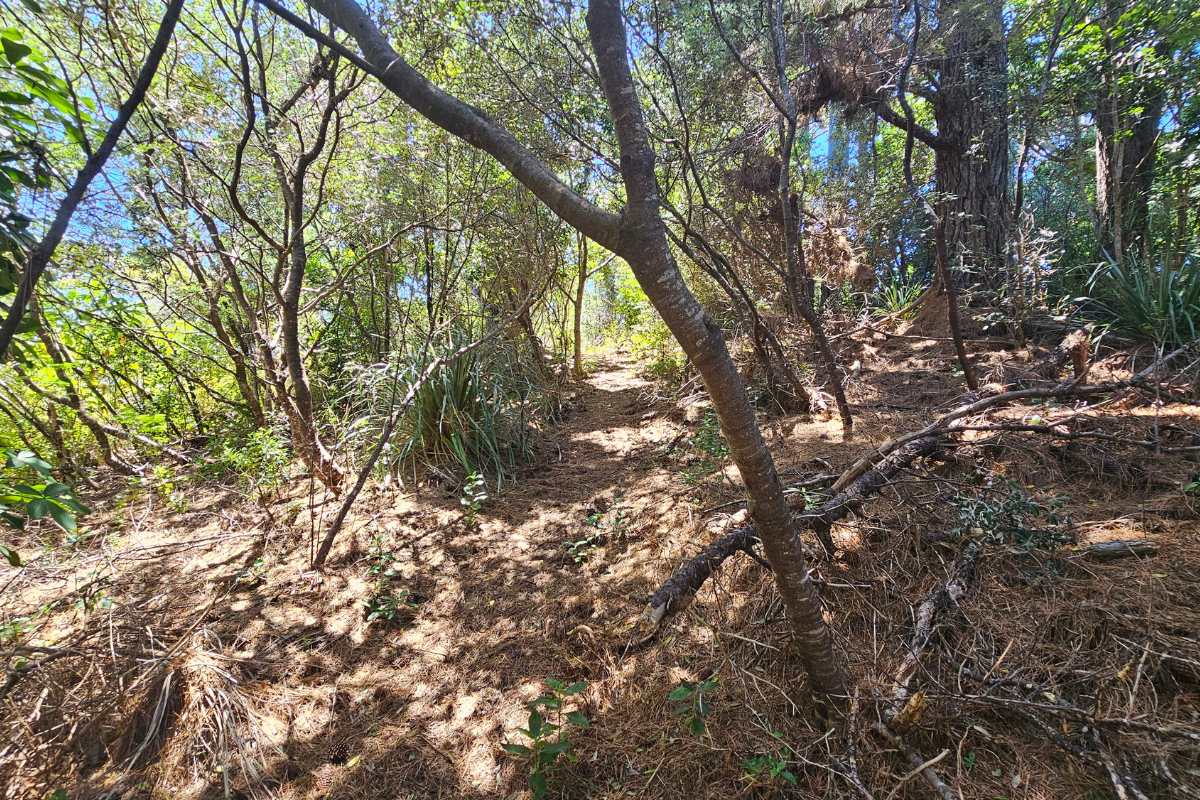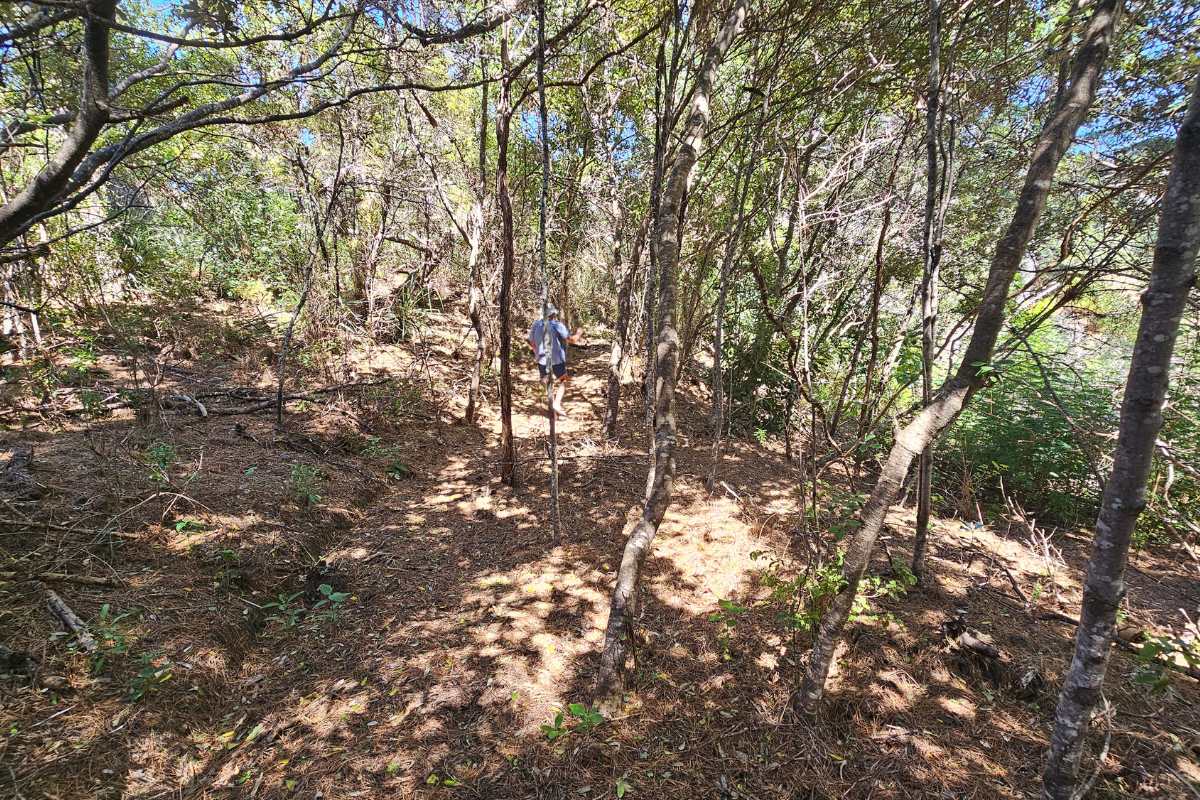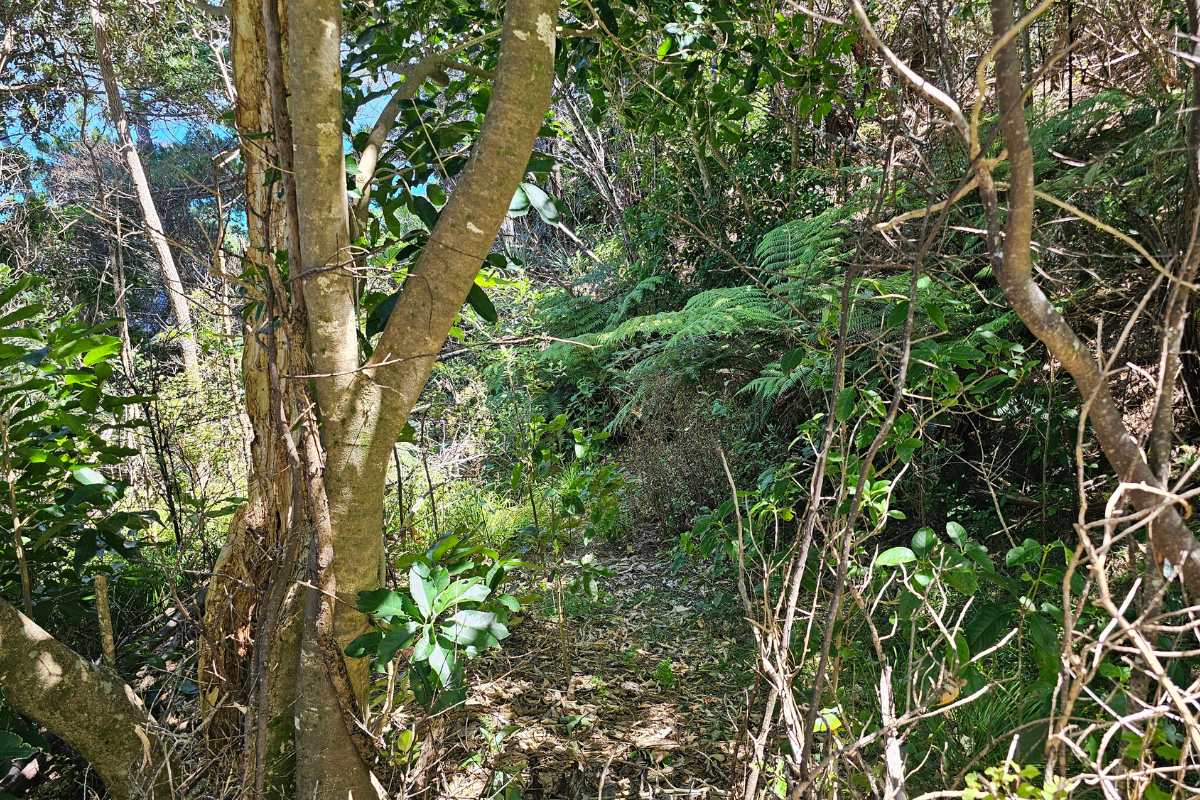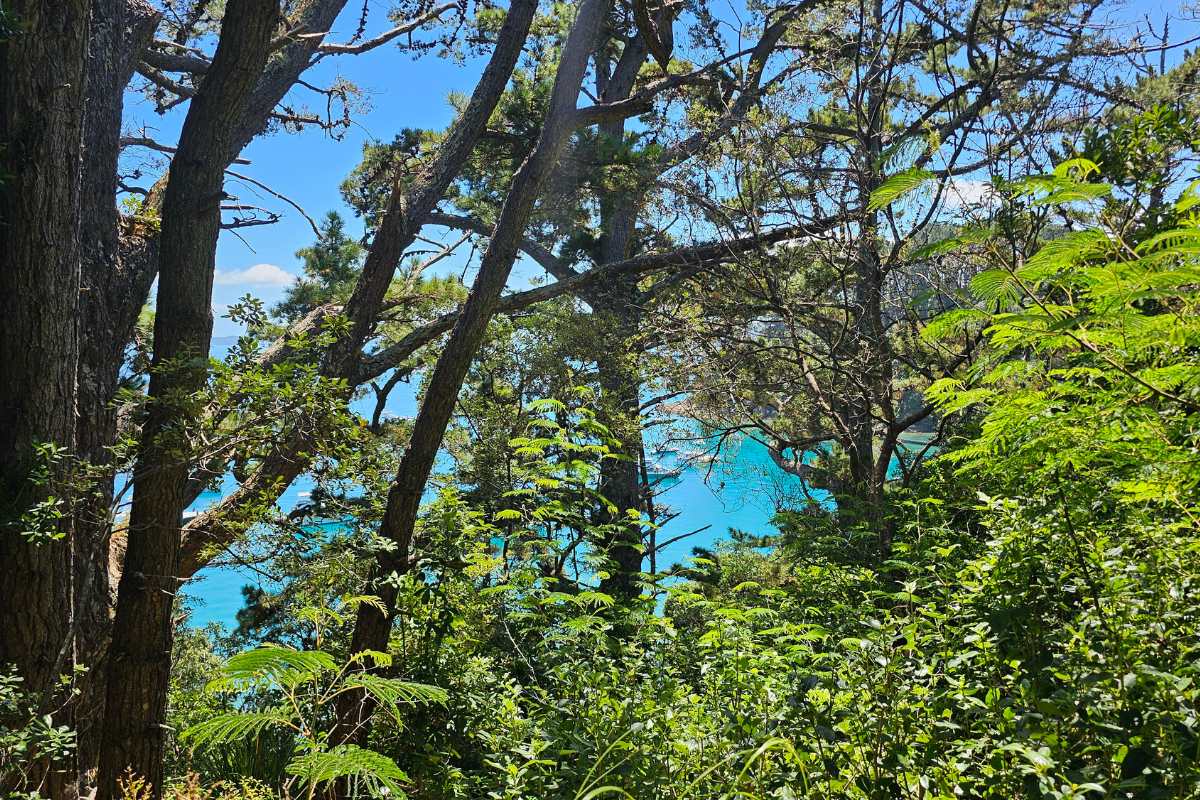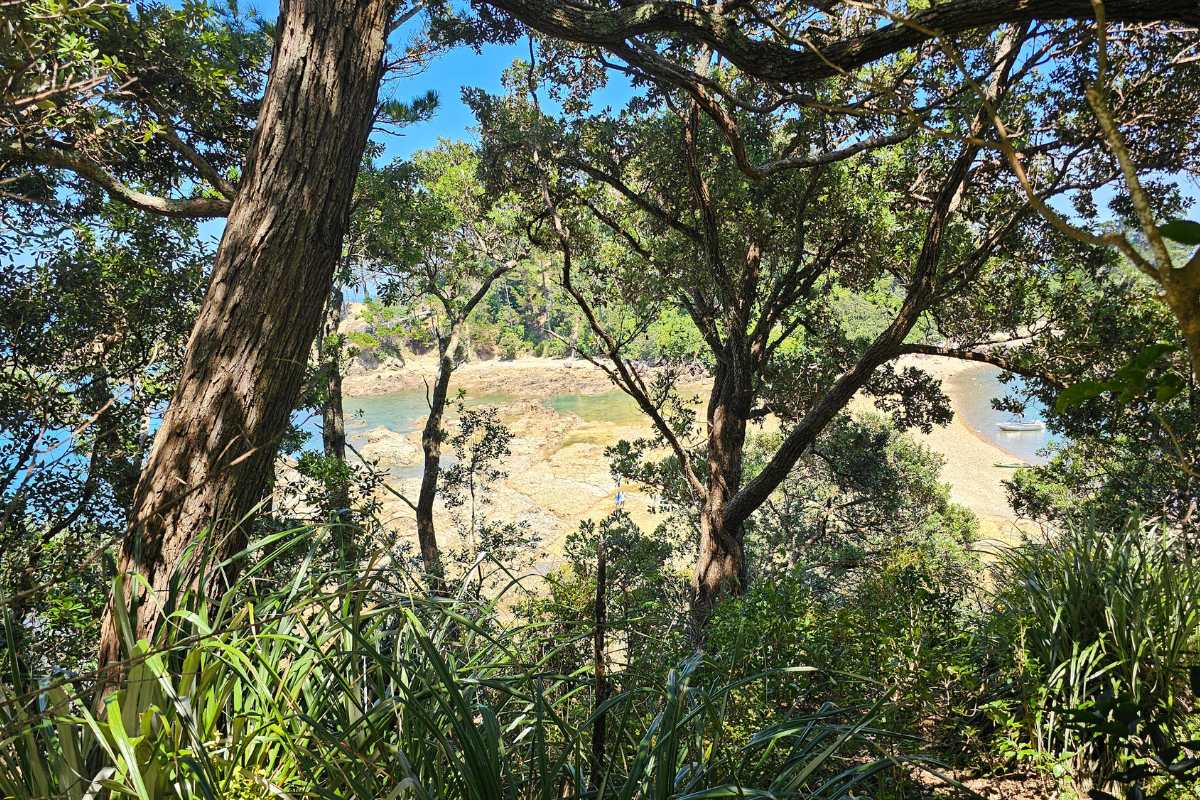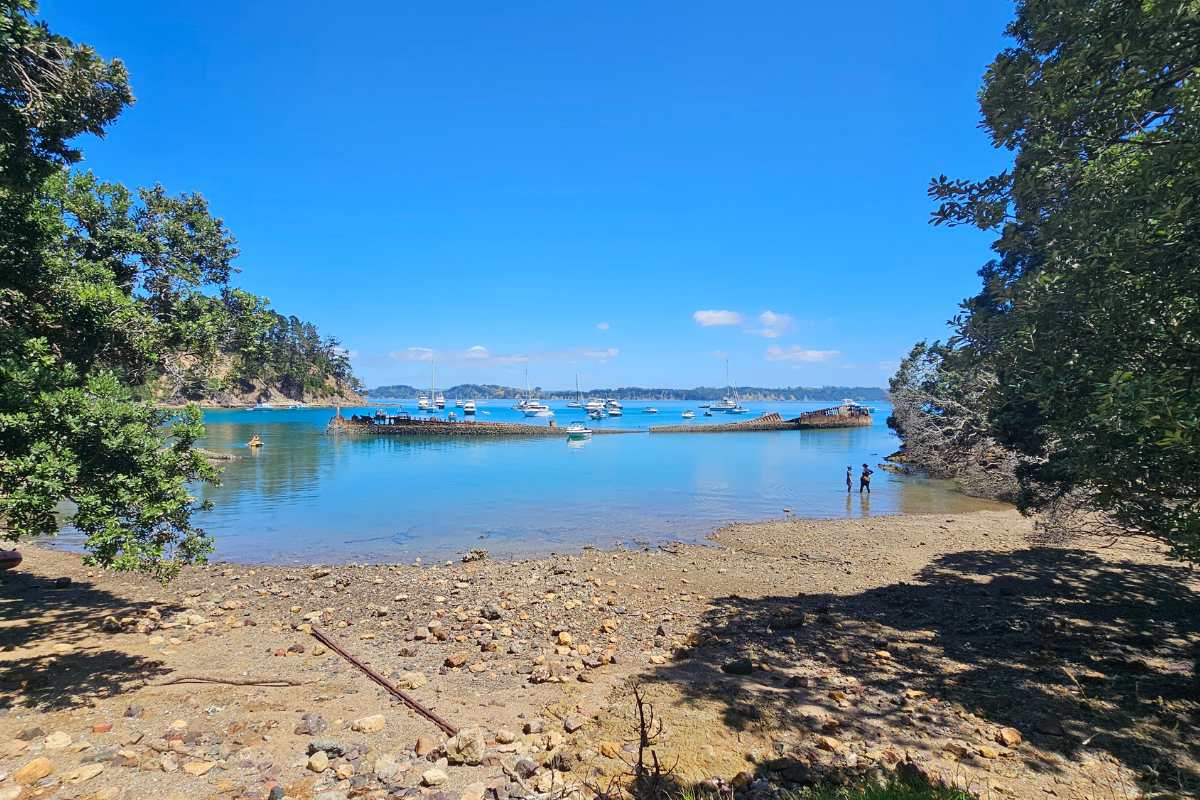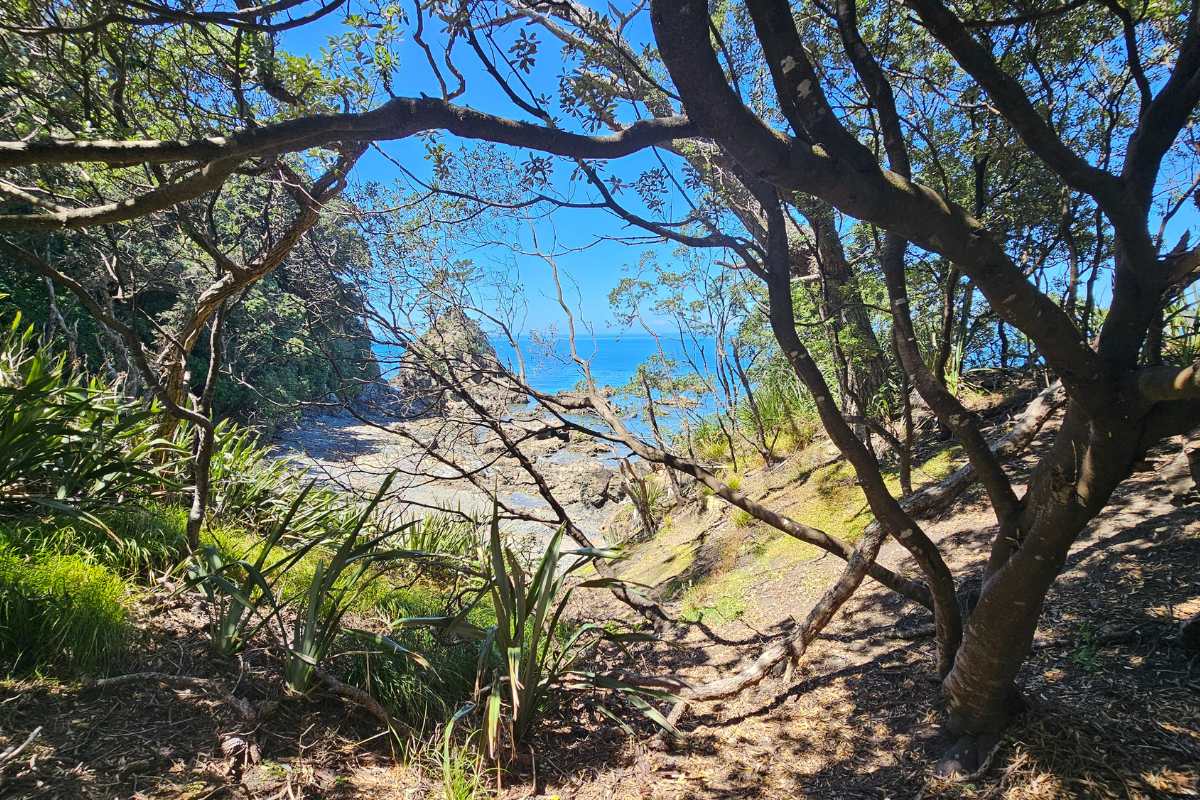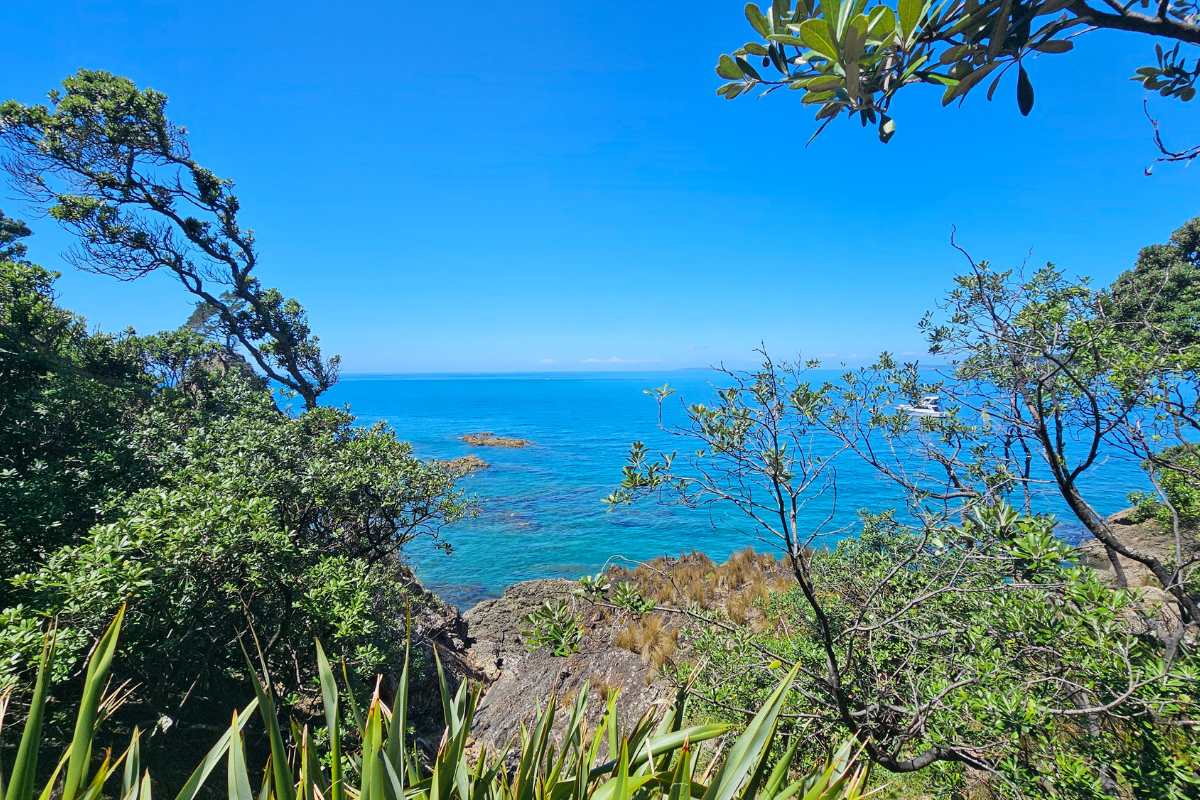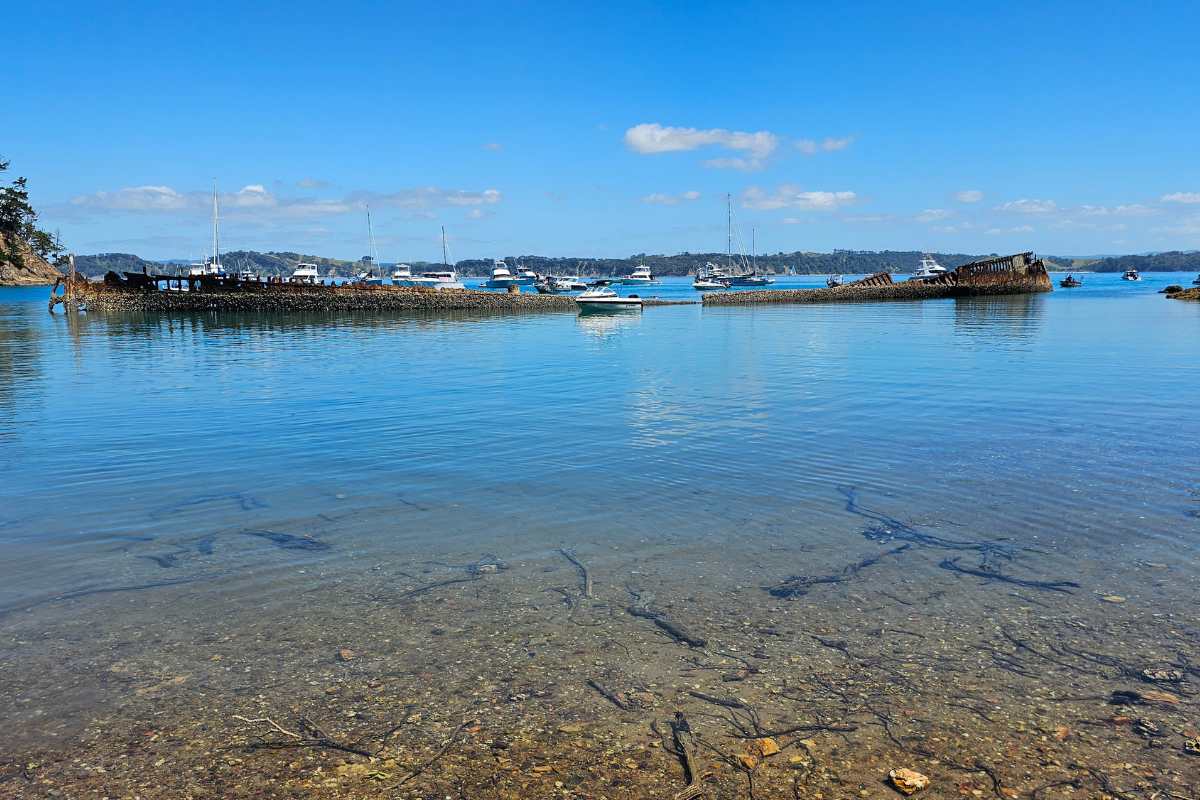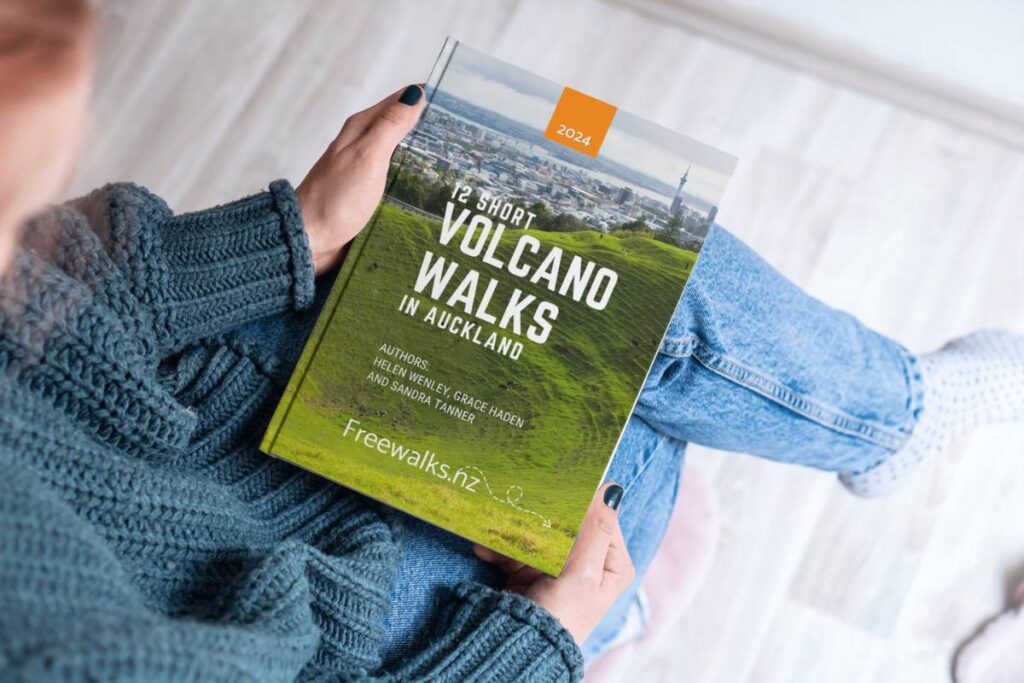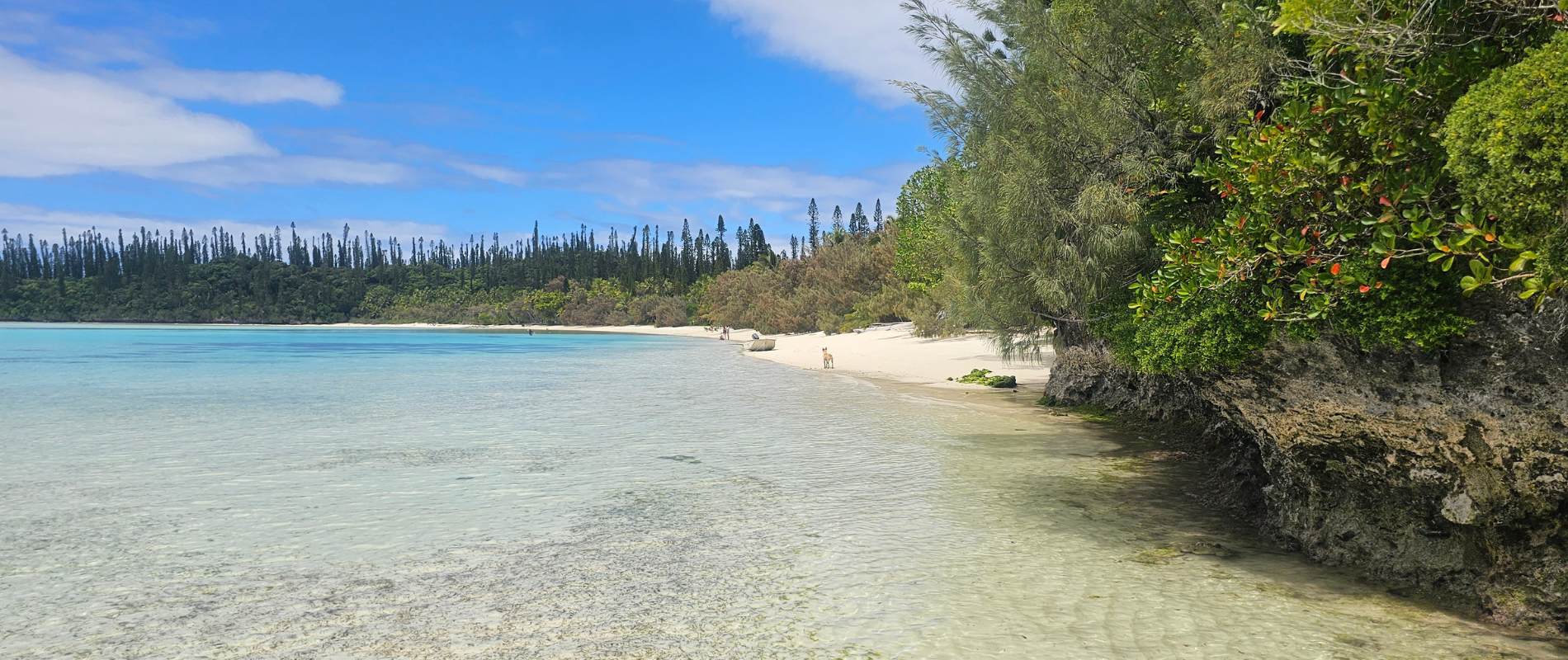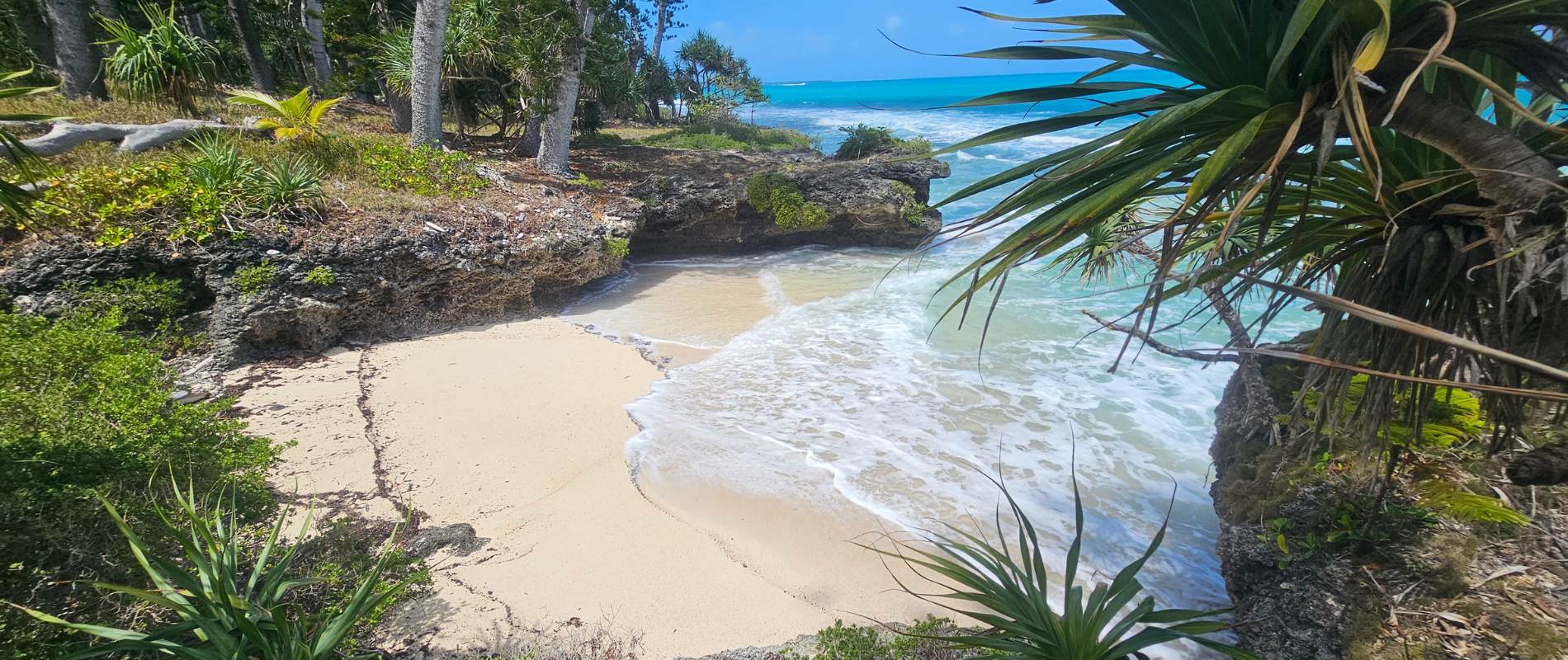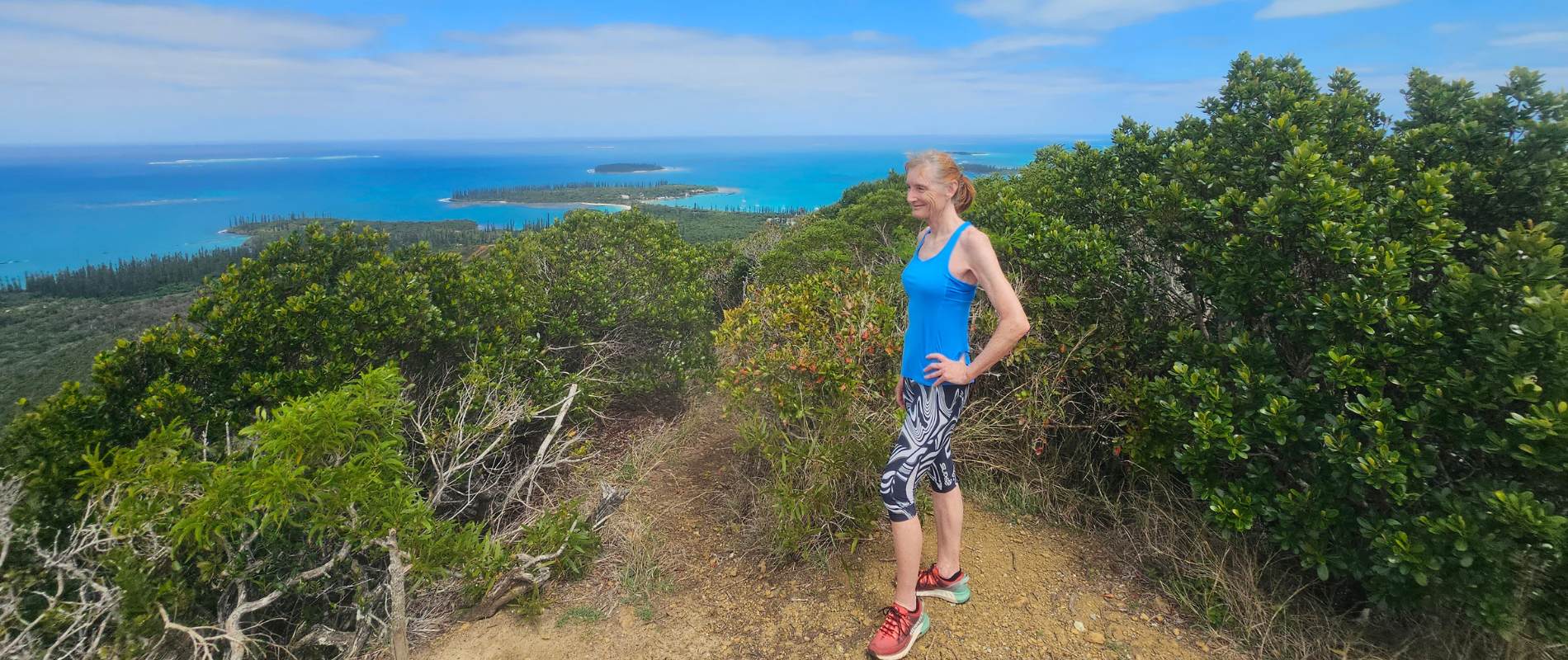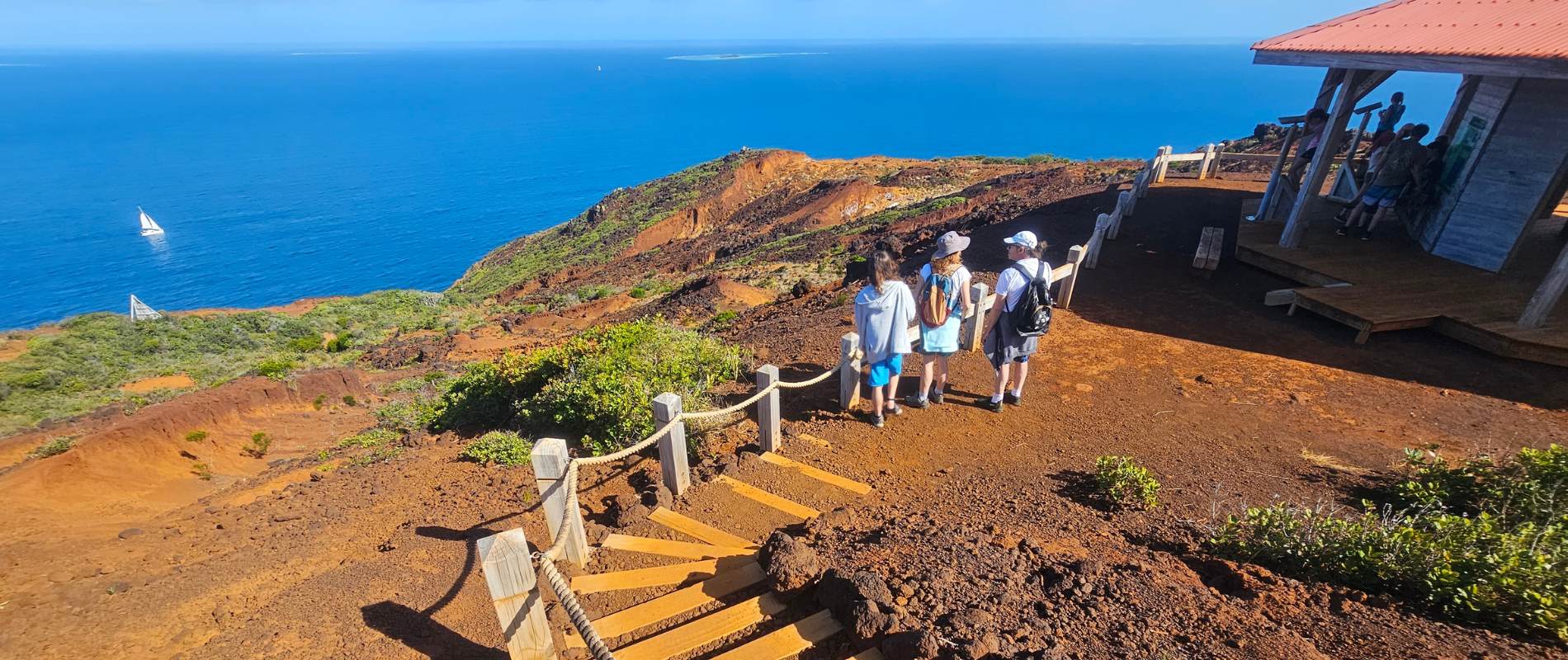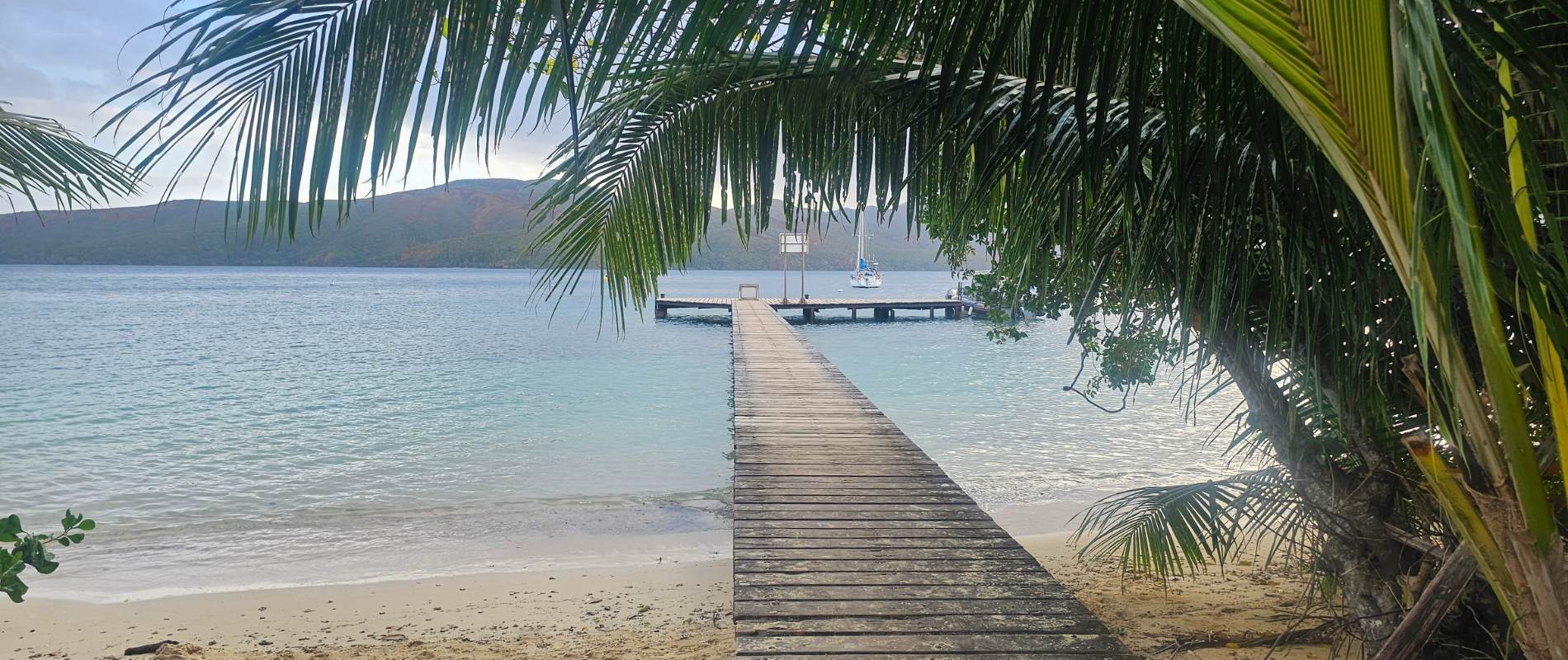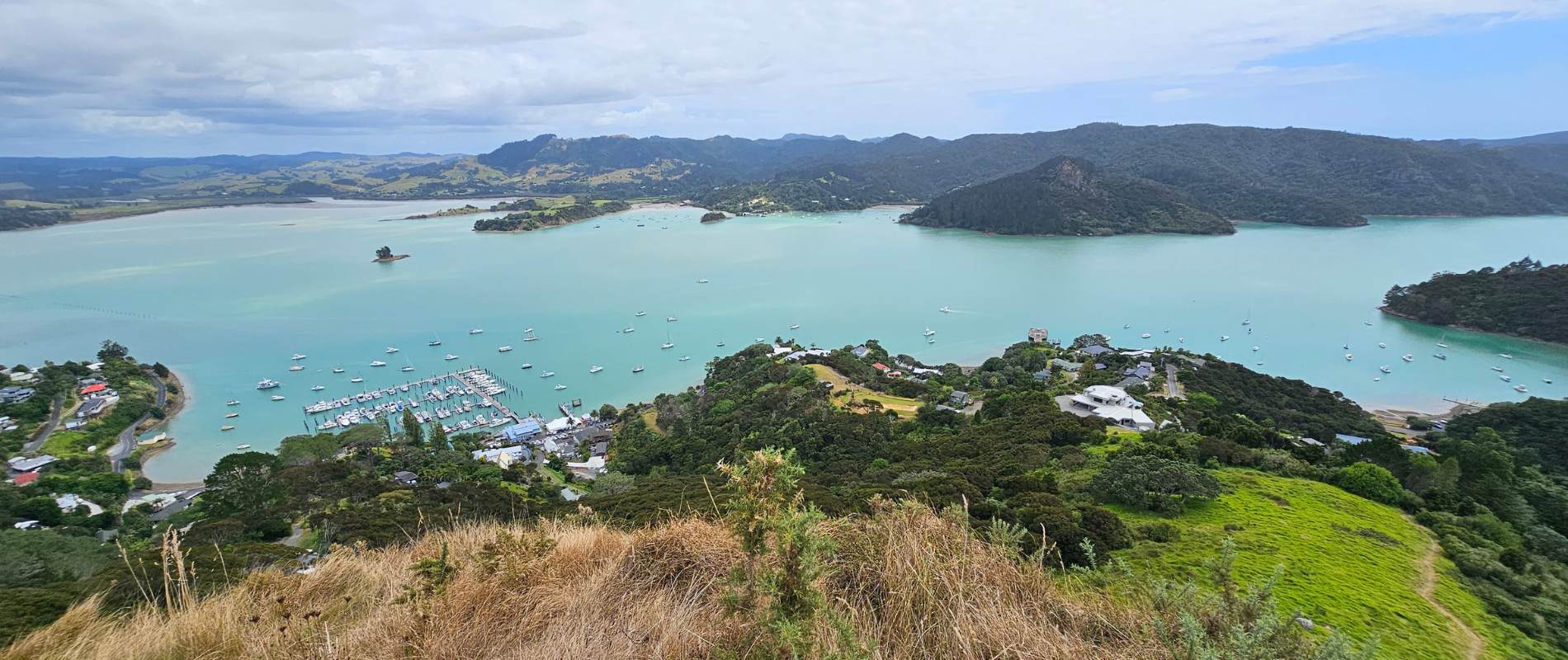Enjoy Island Hopping!
We started the walk from the bay on Moturekareka Island where we anchored our yacht. We took the dingy in and were entertained with the view of a semi-submerged Rewa ship. I’ve explained more about this further down.
There is no road access to this walk. If you go to Kawau Island on the ferry you’ll have to hitch a ride somehow with a boat going from Mansion House. Better to kayak (it’ll take you around 30 mins on a calm day) or take the jetski from Martins Bay on the mainland at Mahurangi East.
This scenic walk crosses a low-tide causeway and connects you to a historic island brimming with charm.
Quick facts about this walk
| Location: | Kawau Island, Hauraki Gulf, Auckland Region, North Island |
| Distance: | 1.9 km |
| Time: | 48 mins return |
| Difficulty: | Easy with a few little ups and downs |
| Elevation: | 76m |
| Track Quality: | The track is a bit overgrown, we managed it in flip flops |
| Transport: | You'll need to make your own way there by boat |
| Mountain bikes? | No |
| Wheelchair access? | No |
| Wet Feet: | A little as you cross the causeway, try and do it at low tide. |
| Toilets: | There are no toilets here |
| Dog: | No dogs allowed anywhere on the islands |
| Mobile coverage: | Yes, ok |
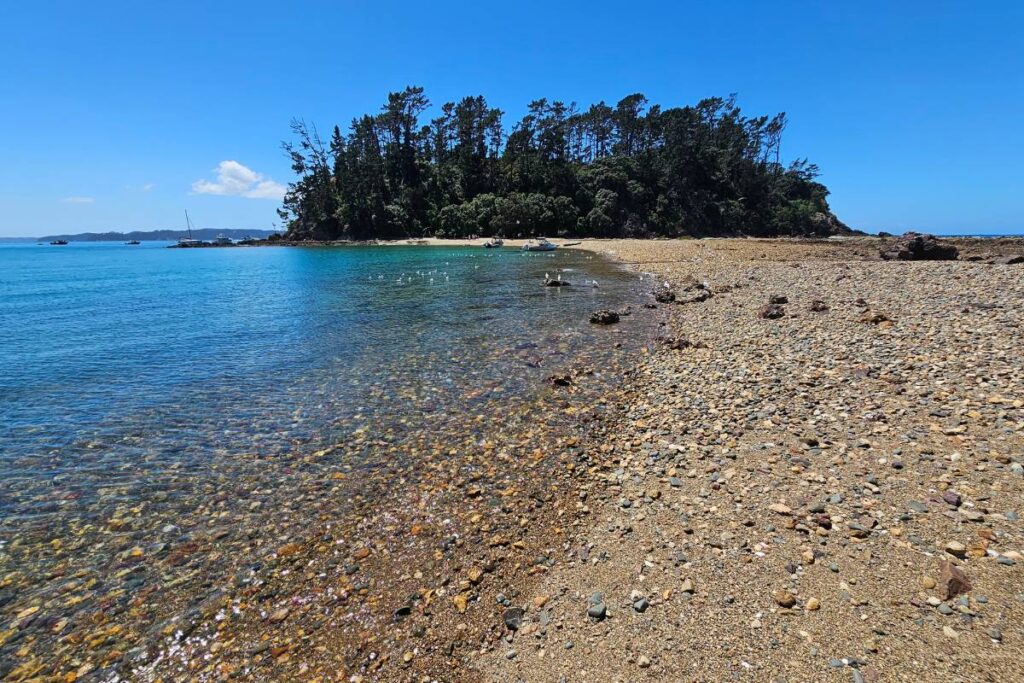
Home of the Hermit
Moturekareka Island, near Kawau Island, was once home to a colourful character known as Charlie P. Hansen, a self-proclaimed hermit who captured the imagination of many. You’ll walk through the clearing where his house once stood, with access down to a cute stoney beach. Here’s a glimpse into his intriguing story:
From Sheep Farmer to Island Dweller:
- Hansen, a Scotsman by origin, initially worked as a sheep farmer but faced financial difficulties.
- In the early 1920s, he managed to acquire Moturekareka and two neighbouring islands, seeking a simpler life away from the mainland.
A Life of Solitude and Resourcefulness:
- Hansen embraced a self-sufficient lifestyle on the island, building his own shelter and tending to gardens and livestock.
- He developed a unique relationship with the ship “Rewa,” which he had purchased with the intention of using as a breakwater (though the scuttling attempt failed).
Connection with the Mainland:
- Despite his preference for solitude, Hansen wasn’t entirely isolated.
- He occasionally interacted with local communities, trading goods and engaging in social exchanges. Legend has it he used to row his clinker dingy across to Martins Bay or Warkworth via the Mahurangi river to pick up supplies.
- He even garnered media attention for his unconventional lifestyle, becoming somewhat of a local legend.
Legacy of the Hermit:
- Hansen’s story continues to intrigue people, sparking curiosity about his motivations and experiences on the island.
- While details about his daily life remain scarce, he left behind a lasting impression as a symbol of self-reliance and living outside societal norms.
Beyond the Hermit:
- It’s important to remember that Moturekareka Island has a rich history beyond Hansen’s presence.
- The island holds significance for Maori people and played a role in Kawau Island’s development, particularly related to copper mining activities.
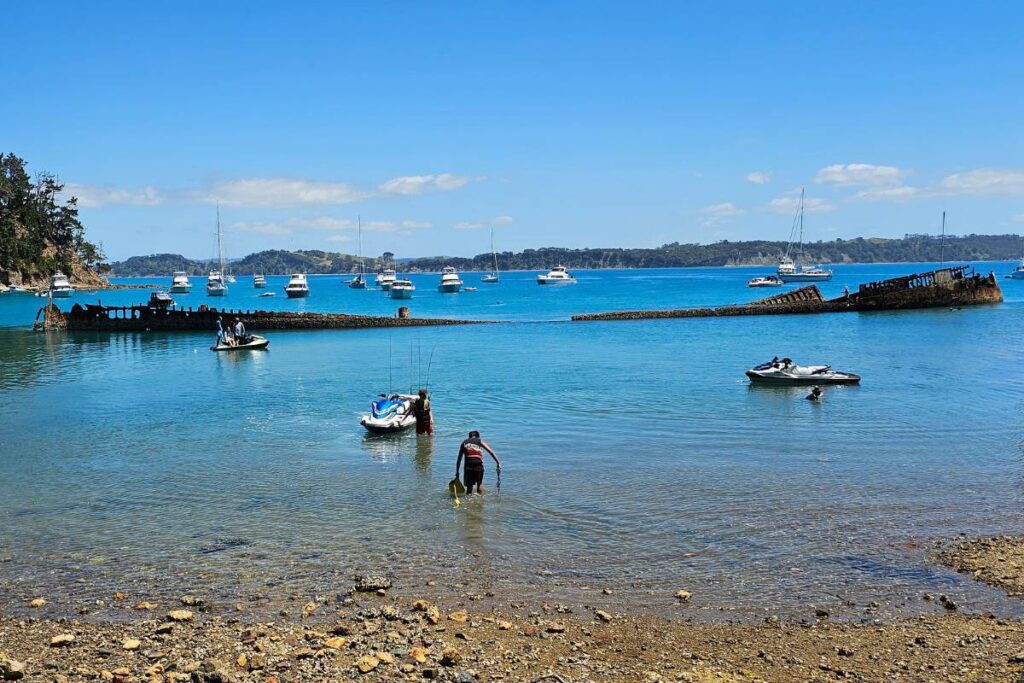
The story of the Rewa ship, now a shipwreck resting on Moturekareka Island
It’s shrouded in a bit of mystery and intrigue and is great to kayak around. Here’s what we know:
The Ship’s History:
- Originally named “Alice A. Leigh,” the Rewa was a four-masted steel barque built in England in 1889.
- It had a long and eventful career, sailing across the globe and even surviving a collision and a near-sinking by a German U-boat during World War I.
- In 1922, it arrived in Auckland, its final voyage, and remained abandoned for nearly a decade.
The Sinking:
- In 1930, Charles Hanson, who owned Moturekareka Island, purchased the Rewa with the intention of scuttling it as a breakwater.
- The plan was to sink the ship in a specific location, but something went wrong.
- The Rewa ended up listing heavily on its side, rendering it useless for its intended purpose.
Uncertainties and Theories:
- There are several theories surrounding the failed scuttling:
- Accidental miscalculation: Some believe it was simply a mistake in positioning the ship for sinking.
- Deliberate act: Others speculate that Hanson might have intentionally sabotaged the scuttling due to financial constraints or changing plans.
- Gambling den dream: There’s even a theory that Hanson intended to convert the ship into an offshore casino, but the failed scuttling thwarted his plans.
The Remains Today:
- The Rewa’s hulk remains partially submerged on the northeastern side of Moturekareka Island, a visible reminder of its eventful past.
- The masts lie broken at the bow, and the top deck was cut off by the tide.
A Piece of Kawau’s History:
- While the exact details of the scuttling may remain unclear, the Rewa shipwreck adds a unique layer of intrigue to Kawau Island’s history.
- It serves as a tangible reminder of the island’s past and continues to spark curiosity among visitors.
How to get to Kawau Island by Ferry
- There is a regular ferry service departing from Sandspit, located approximately 1.5 hours north of Auckland by car near Warkworth.
- The journey from Sandspit to Kawau Island takes about 20 minutes.
- Book your tickets in advance, especially during peak season.
